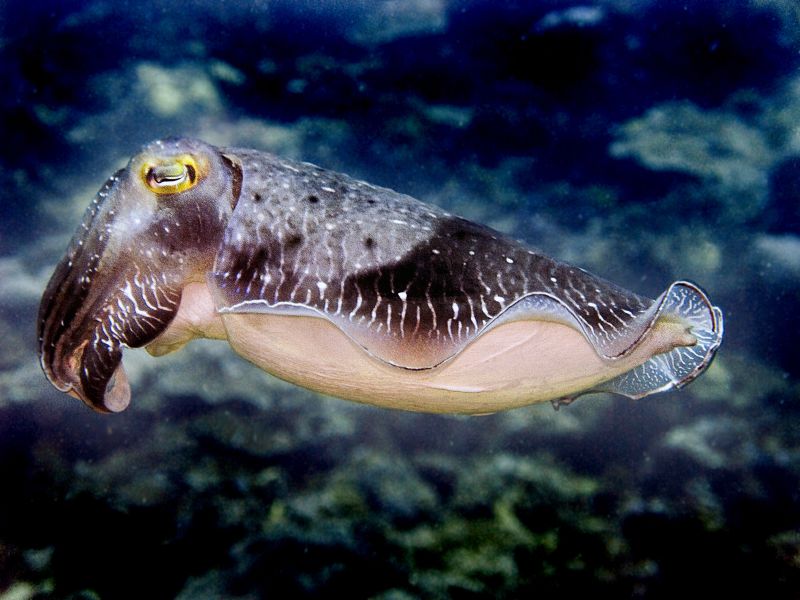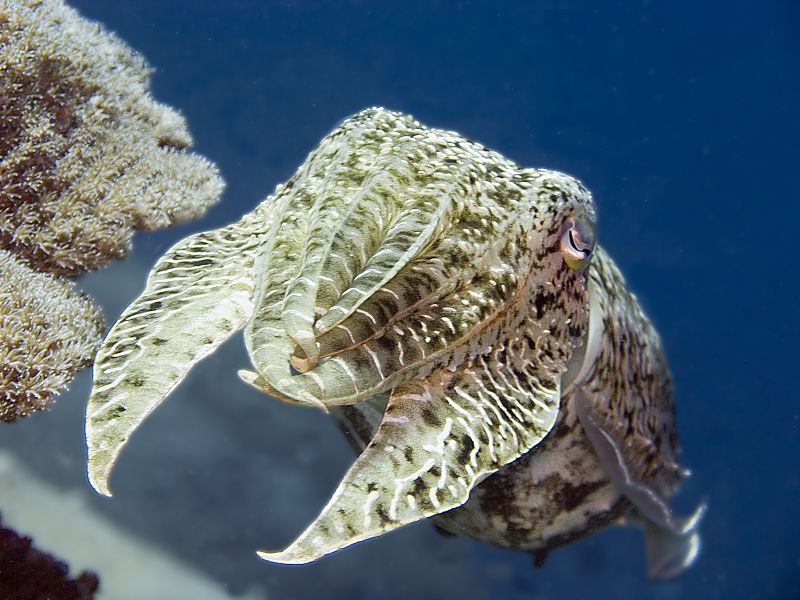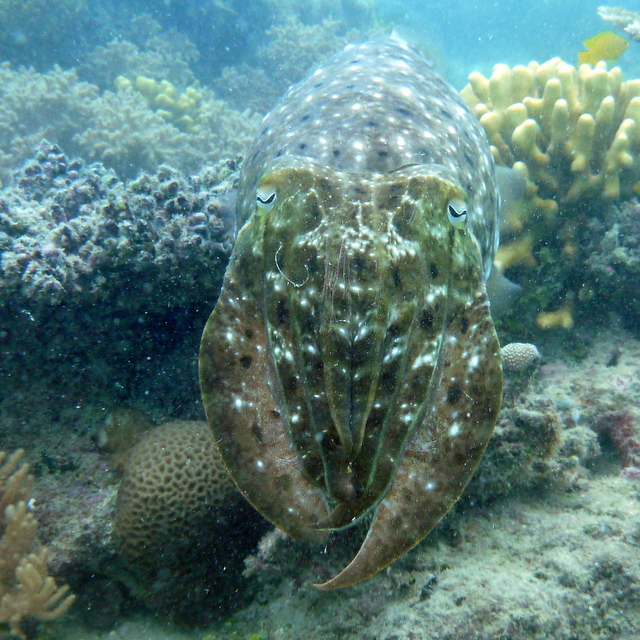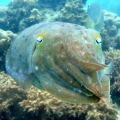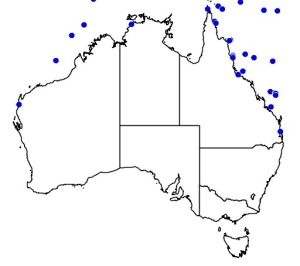Colours
Distinguishing features
They can be seen displaying a range of colors and textures. Commonly they are light brown or yellowish with white mottled markings.
Males are sometimes dark brown, particularly during courtship and mating.
The arms have longitudinal white bands that appear as broad white blotches when extended. Some arms have longitudinal brown bands that extend to the head. The dorsal mantle can sometimes be seen with a saddle mark with small white and brown spots.
The dorsal mantle also has narrow brown transverse bands, and bold, white, transverse stripes and spots. The eyes are yellow around the ventral margins and the fins are pale with white, transverse stripes extending onto mantle and narrow, white bands along outer margins. (Wikipedia)
Size
- Up to 50 cm (Mantle Length)
Depth range
- Up to 30 m
Synonyms
Distribution
Distribution and habitat preferences
It is widely distributed from the Andaman Sea, east to Fiji, and south to northern Australia. It is the most common cuttlefish species on coral reefs. (Wikipedia)
Diet
It is known to prey on shrimp and prawns of the genus Palaemon. They appear to mesmerize prey with their rhythmic colored bands. (Wikipedia)
Web resources
References
- Garcia, M., C. Edmiston, R. Marinov, A. VAIL and V. Gruev (2017). LIRS catalog number 2102.
- Kingston, A.C.N., A.M. Kuzirian, R.T. Hanlon and T.W. Cronin (2015). Visual phototransduction components in cephalopod chromatophores suggest dermal photoreception, The Journal of Experimental Biology, 218: 1596-1602. LIRS catalog number 1938.
- Norman, M. (2000). Cephalopods: A world guide ConchBooks, Hackenheim, Germany.
- View all references
